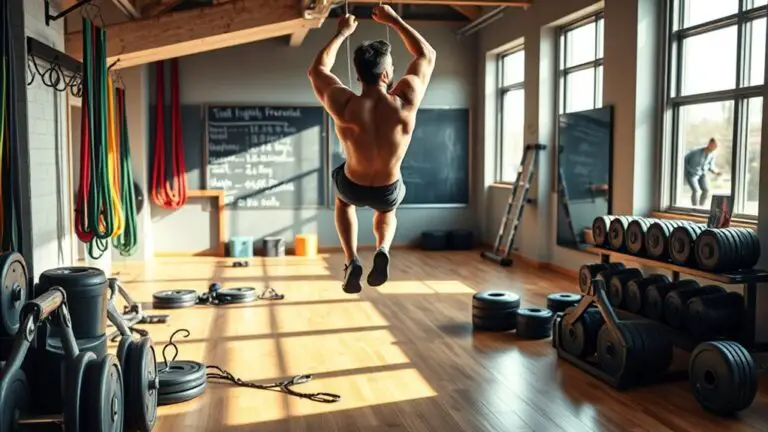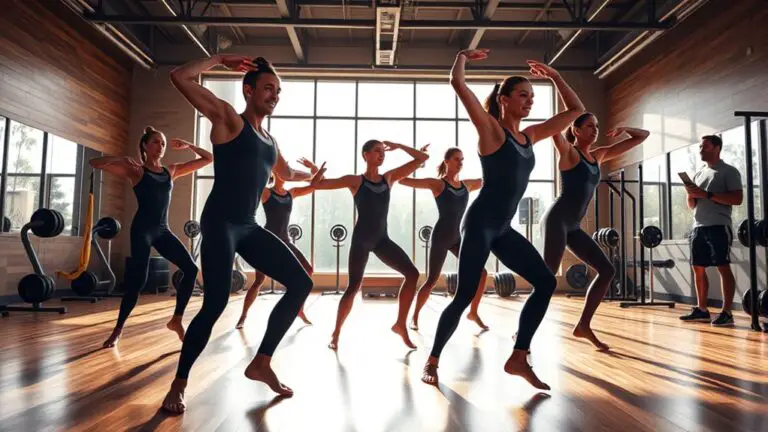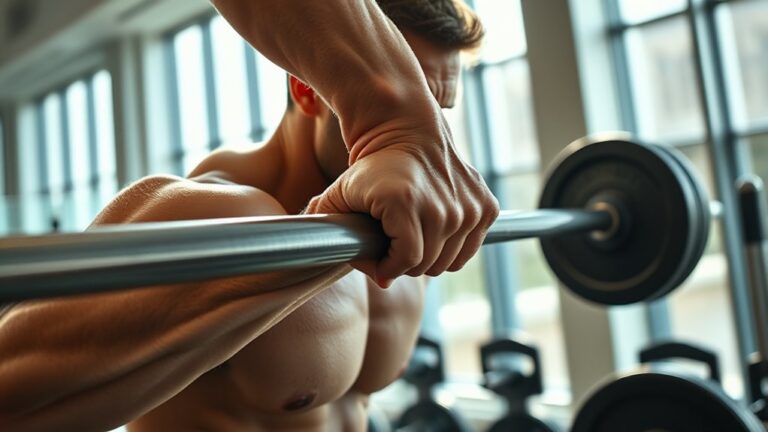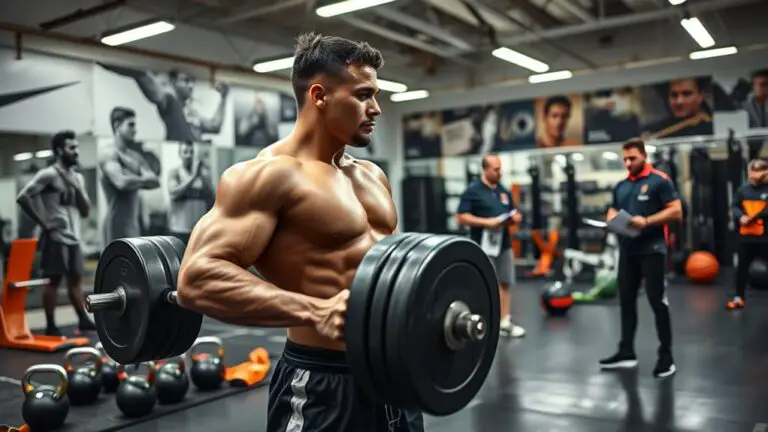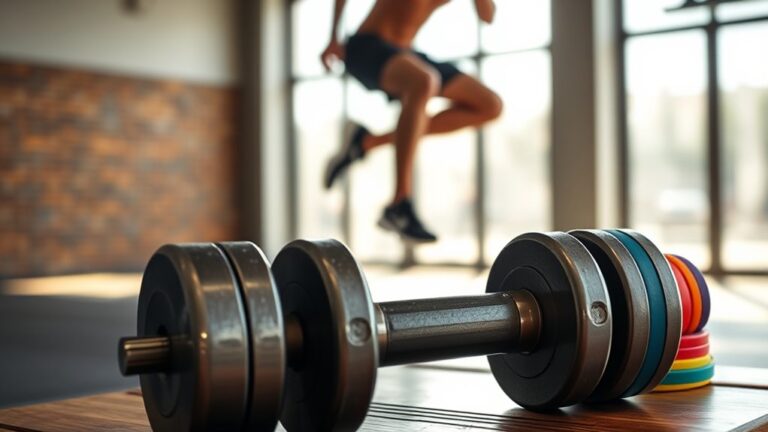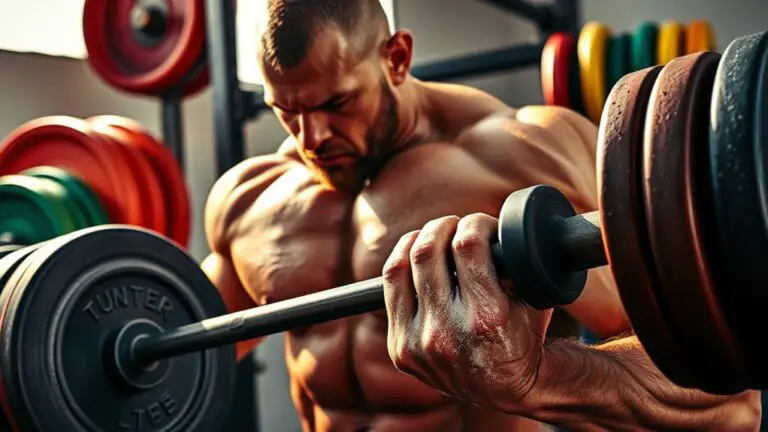The Best “One Barbell” Workouts for Time-Saving Strength Training
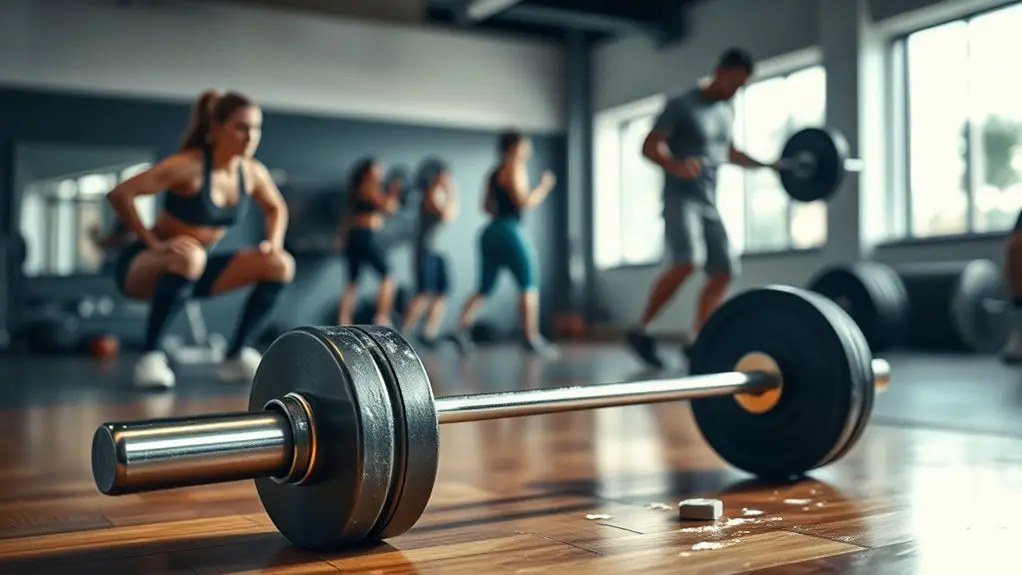
One barbell workouts are a fantastic way to get efficient strength training without the need for multiple pieces of equipment. You can build overall strength by targeting multiple muscle groups with key compound movements like squats and deadlifts. Mix in advanced techniques like barbell complexes and tempo variations for an extra challenge. To maximize your training, focus on proper form, progressive overload, and time-efficient circuits. Keep exploring to discover more tips and advanced exercises for your routine.
Understanding the Benefits of One Barbell Workouts

When you think about effective workouts, one barbell might not be the first thing that comes to mind, but it’s surprisingly versatile. A one barbell workout offers a benefits overview that highlights its efficiency in building strength. With just one piece of equipment, you can perform a wide range of exercises targeting multiple muscle groups, which maximizes your workout time. This strength efficiency means you can achieve significant results without needing a full gym setup.
Additionally, using a single barbell encourages functional movements, improving your overall stability and coordination. You’ll find that this simplicity not only saves time but also reduces the intimidation factor often associated with complex routines. Plus, it’s easy to adjust weights, allowing for progressive overload as you grow stronger. Embracing one barbell workouts can streamline your training while delivering powerful results.
Essential Equipment for Your One Barbell Routine
To get the most out of your one barbell routine, you’ll need to understand the different types of barbells available and how to choose the right weight plates. Additionally, having the right accessories can enhance your workout experience and safety. Let’s explore these essential pieces of equipment to set you up for success.
Barbell Types Explained
Understanding the different types of barbells is essential for maximizing your one barbell routine, as each type offers unique benefits tailored to various training styles and goals. Most barbells are made from steel or aluminum, with variations in grip and finish. Standard barbells typically come in lengths of 5 to 7 feet, accommodating different exercises and user heights. Olympic barbells, often 7 feet long, are designed for heavier lifts and feature rotating sleeves for smoother movements. For more versatility, consider shorter or specialty bars, which can target specific muscle groups. Knowing the right barbell materials and lengths will help you choose the best equipment for your strength training, ensuring you get the most out of your workouts.
Weight Plates Selection
Selecting the right weight plates is essential for optimizing your one barbell workouts. You’ll want to take into account both weight plate types and weight plate materials to find what suits you best. Here’s a quick guide to help you choose:
- Bumper Plates: Great for Olympic lifts; they’re made of rubber to minimize noise and floor damage.
- Cast Iron Plates: Durable and affordable, perfect for traditional strength training.
- Steel Plates: Very sturdy, ideal for heavy lifting, but be cautious of rust.
- Polymer Plates: Lightweight and easy to handle, perfect for beginners or home use.
- Fractional Plates: Useful for incremental increases in weight, allowing for gradual progress.
With the right plates, you’ll enhance your strength training efficiency and effectiveness!
Essential Accessories Needed
While you may think a barbell is all you need for an effective workout, having the right accessories can greatly enhance your training experience. Barbell accessories not only improve workout efficiency but also guarantee safety and comfort. Consider incorporating the following essentials into your routine:
| Accessory | Purpose | Benefits |
|---|---|---|
| Weightlifting Belt | Supports your lower back | Enhances stability and safety |
| Barbell Collars | Secures weight plates | Prevents shifting during lifts |
| Lifting Straps | Improves grip on the barbell | Enables heavier lifts without grip fatigue |
With these accessories, you’ll maximize your strength training potential while minimizing the risk of injury. Don’t overlook these small yet impactful additions to your one barbell workouts!
Full-Body One Barbell Workout for Beginners
Before you start your full-body one barbell workout, it’s essential to warm up properly to prepare your muscles and joints. You’ll want to focus on key compound movements that engage multiple muscle groups for maximum efficiency. Finally, don’t skip the cool down techniques to help your body recover and reduce soreness.
Essential Warm-Up Exercises
To guarantee you get the most out of your one barbell workout, incorporating essential warm-up exercises is crucial. Warming up prepares your body, enhances flexibility, and reduces the risk of injury. Focus on dynamic stretches and mobility drills to get your muscles ready. Here are five effective warm-up exercises you should include:
- Arm circles: Loosen up your shoulders and improve your range of motion.
- Leg swings: Activate your hip flexors and hamstrings.
- Torso twists: Increase spinal mobility and warm up your core.
- Walking lunges: Engage your lower body muscles and improve balance.
- High knees: Elevate your heart rate and enhance coordination.
Incorporate these warm-ups, and you’ll feel more prepared for your full-body workout!
Key Compound Movements
A solid full-body workout with just one barbell can be incredibly effective for beginners looking to build strength and improve overall fitness. Key compound movements like barbell squats and deadlift variations engage multiple muscle groups, making your workout efficient and impactful.
Start with barbell squats to strengthen your legs, core, and lower back. They’re not only great for muscle building but also enhance your balance and stability. Incorporate deadlift variations, such as the conventional deadlift or sumo deadlift, to target your posterior chain and improve functional strength.
These movements lay the foundation for your strength training journey, ensuring you develop a well-rounded physique. Stick to proper form, and you’ll be on your way to achieving your fitness goals in no time!
Cool Down Techniques
Cooling down after your one barbell workout is just as important as the workout itself. It helps your body recover and reduces muscle soreness. Here are some effective cool down techniques to incorporate:
- Static Stretching: Focus on major muscle groups to improve flexibility and reduce tension.
- Foam Rolling: Use a foam roller to release muscle knots and promote blood flow.
- Mindfulness Breathing: Practice deep breathing to calm your mind and lower your heart rate.
- Muscle Relaxation: Engage in gentle movements or stretches to relax your muscles further.
- Hydration: Drink water to replenish fluids lost during your workout.
Incorporating these techniques will enhance your recovery, making your workouts more effective in the long run.
Advanced One Barbell Strength Training Exercises
While many strength training routines rely on multiple pieces of equipment, advanced one barbell exercises can deliver a challenging and efficient workout. By incorporating advanced techniques like the barbell complex or the overhead squat, you can maximize your strength gains while keeping your routine simple. These exercises not only engage multiple muscle groups but also improve your coordination and stability.
To achieve progressive overload, gradually increase the weight or the complexity of your movements. For example, you could try adding pauses in key positions or performing more reps within a set time frame. This method guarantees your muscles continually adapt, leading to greater strength and endurance over time.
Additionally, don’t overlook the benefits of tempo training. Slowing down your lifts can enhance muscle tension, making your workouts even more effective. Embrace these advanced exercises, and you’ll see impressive results with just one barbell.
Time-Efficient One Barbell Circuit Workouts
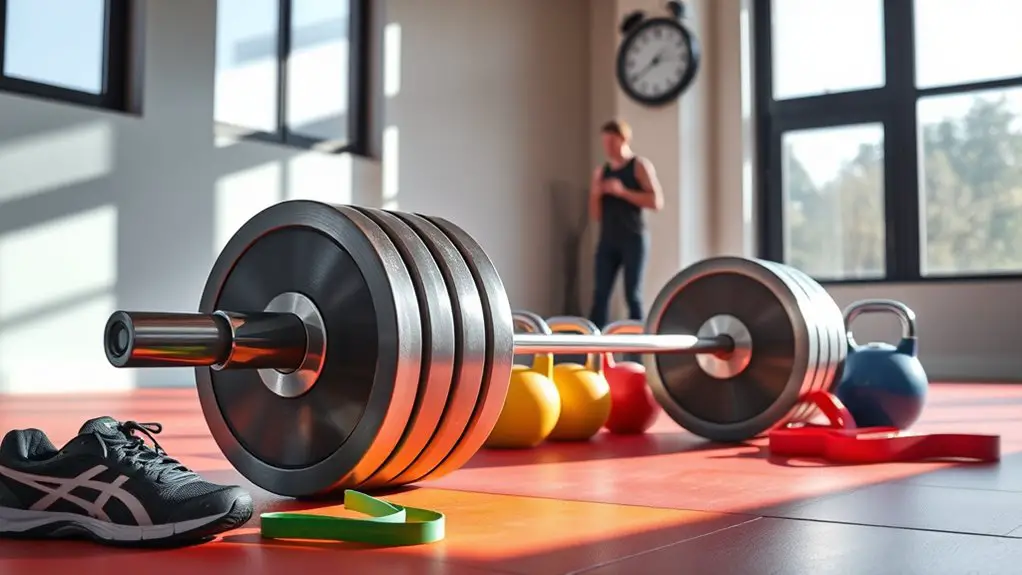
Looking to maximize your workout efficiency? Time-efficient one barbell circuit workouts are perfect for you. These routines incorporate time-saving techniques that guarantee you get the most out of your limited gym time. Here’s how you can structure your efficient routines:
- Full-Body Focus: Choose exercises that target multiple muscle groups.
- Short Rest Intervals: Keep your heart rate up by minimizing downtime.
- Superset Pairing: Alternate between different movements for balanced strength training.
- Progressive Overload: Gradually increase weights or reps for continuous improvement.
- Circuit Style: Rotate through exercises without rest to boost endurance and strength.
Tips for Maximizing Your One Barbell Training
To get the most out of your one barbell training, focus on proper technique and form, since this not only prevents injuries but also maximizes your workout efficiency. Begin by incorporating a variety of exercises, such as squats, deadlifts, and presses, to target different muscle groups. This keeps your workouts fresh and engaging.
Don’t forget about progress tracking! Regularly record your weights, sets, and reps to measure your improvements over time. This not only helps you stay motivated but also allows you to make informed adjustments to your training.
Additionally, don’t hesitate to mix in workout variations. Try different grips, stances, or tempos to challenge your body and stimulate growth. By staying adaptable and mindful of your technique, you’ll guarantee your one barbell workouts remain effective and enjoyable. Remember, consistency and variety are key to achieving your strength training goals.
Safety Precautions When Using a Barbell
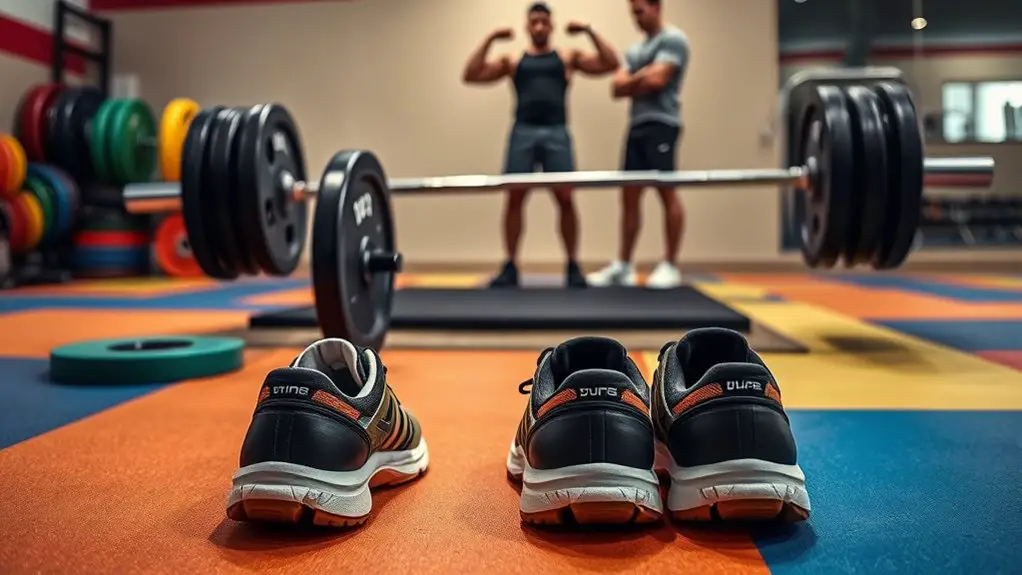
When using a barbell, prioritizing safety is essential to prevent injuries and guarantee a productive workout. Here are some key precautions to keep in mind:
- Check your grip: Make sure your barbell grip is secure and comfortable to avoid slips during lifts.
- Warm-up properly: Always perform a thorough warm-up to prepare your muscles and joints for the workout.
- Use proper form: Focus on maintaining correct posture and technique to minimize the risk of injury.
- Start light: Begin with lighter weights to master the movements before progressing to heavier loads.
- Have a spotter: If you’re lifting heavy, having a spotter can provide extra safety and support.
Frequently Asked Questions
Can I Use a Dumbbell Instead of a Barbell?
Absolutely, you can use a dumbbell instead of a barbell! Dumbbells offer several benefits, like improved stability and better range of motion. They also help you correct muscle imbalances since each side works independently. While barbells typically allow you to lift heavier weights, dumbbells can still provide an effective strength comparison. Just make sure you adjust your workouts accordingly to maximize your strength gains, and you’ll see great results with either option!
How Often Should I Do One Barbell Workouts?
Think of your body as a well-tuned engine; it needs the right frequency of workouts and recovery periods to run smoothly. For one barbell workouts, aim for 3 to 4 sessions per week, allowing at least 48 hours of recovery between sessions targeting the same muscle groups. This frequency guarantees you build strength effectively while minimizing the risk of injury. Listen to your body; it’ll guide you on when to push harder or take a break.
What’S the Best Barbell Weight for Beginners?
When you’re starting with barbell workouts, it’s essential to choose the right weight. Beginner weight guidelines suggest starting with about 20% of your body weight, but it’s best to listen to your body. Barbell selection tips include opting for a standard 45-pound barbell or a lighter one if needed. Always prioritize form over weight to prevent injuries, and gradually increase the weight as you gain strength and confidence in your movements.
Can One Barbell Workouts Build Muscle Effectively?
You won’t believe how effective one barbell workouts can be for muscle growth! With just one piece of equipment, you can achieve incredible workout efficiency by targeting multiple muscle groups in a single session. By incorporating compound movements, you’ll stimulate your muscles effectively, leading to serious gains. Plus, the simplicity of a one barbell setup means you can focus on your form and intensity, maximizing your results without the hassle of a full gym.
Are There Any Dietary Tips to Complement Barbell Training?
To complement your barbell training, focus on macronutrient balance. Guarantee you’re getting enough protein for muscle recovery, along with healthy fats and carbohydrates for energy. Meal timing matters too; try to consume a balanced meal or snack within 30 minutes post-workout to maximize recovery. Staying hydrated is essential as well. With the right diet, you’ll enhance your strength gains and overall performance, making your training more effective and rewarding.
